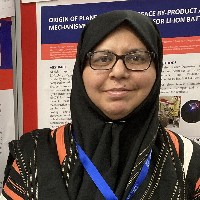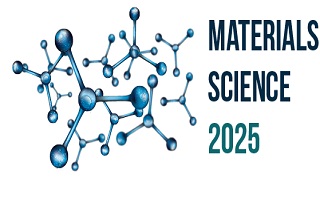2nd Global Event on
Materials Science and Engineering
November 06-07, 2025 | London, UK
Address: Building A, Bath Road, Heathrow Boulevard, Sipson, West Drayton, UB7 0DU, United Kingdom
Materials Science 2025

University of Sheffield, UK
Title : Electrochemical Cycling Stability of Zr, Nb and Mo Doped Lithium Nickel Oxide Cathodes for LIBs
Abstract:
An alternative to LiNixCoyAl1−x−yO2 (NCA, x > 0.8) and LiNixMnyCo1−x−yO2 (NMC, x ≥ 0.5) cathode composition is LiNiO2. The presence of Cobalt poses complications to these cathode chemistries with regards to its exorbitant cost, environmental damage during its mining, and ethical concerns during its acquisition. A series of compositions with formulae LiNi1−xNbxO2 (0≤x≤0.80) and Li1+yNi(3-5y)/3Mo2y/3 were made by solid state route. Due to the process of doping we anticipated a change in the crystal lattice. The focus of the investigation was morphological and electrical studies after doping. The major characterization techniques used were XRD, EDX, SEM, and electrochemical testing. XRD results revealed that the Zr, Nb and Mo doping resulted in a regular layered structure along with lower cation-ion mixing. The process of doping tailored microstructure, which was revealed smooth grain and grain boundary formation via SEM studies. SEM indicated that the Zr, Nb and Mo doped composition has prominent impact on the growth of primary particles. For the Zr/Nb doped compositions grain growth, with size variation in the grain boundaries was observed besides the quasi-secondary shape. The impact of the altered morphology on the electrochemical properties was tested using ½ and full coin cells at ambient conditions. The electrochemical performance of the LNO and Nb doped LNO (1 and 2)% was characterized at (3.0 - 4.3) V using a 2032 coin-type half-cell with a Li metal anode. The electrochemical data revealed 258.7 mAh g−1 first charge capacity compared to 207.6 mAh g−1 for LNO. Nb doped cathodes revealed 92 % better retention capacity after the first 50 cycles. Zr/Nb-doped cathodes have cycled noticeably better than LNO. The kinetic hindrance peak below 3.6 V is an additional redox couple that is only present in LNO. This variation in the lattice due to doping is beneficial for the electrochemical performance helping stabilise the lattice. It is observed that Nb doped compositions exhibited less polarization as compared to LNO in dQ/dV vs. Voltage plots. This feature assisted in smooth transition of H2 to H3 phase during the electrochemical cycling process. The proposed Nb (1 and 2)% doped compositions have delivered superior energy density and stable cycling ability unlike conventional cathodes. The long cycling of Nb doped 1% for 500 cycles shows improved performance against microcracks in the cathode.
Biography:
I did my PhD in 2015 under supervision of Prof. Naveed Kausar Janjua (Quaid-i-Azam University, Islamabad Pakistan) and Prof. John Irvine (University of St Andrews, UK). I have worked on various synthesis routes i.e., pechini, citric acid, solution, and precipitation to synthesis olivine’s, layered oxides, spinel, and rock salt compositions. I worked in Pakistan Institute of Engineering and Applied Sciences(PIEAS) Nilore, Islamabad as assistant professor for 3.5 years. I have more than 8 years of experience in academia and industry funded projects in UK and Pakistan. I have worked on JLR and Nissan cathode compositions for electric vehicles. Presently I am looking for new chemistries related to lithium nickel oxide composition under FutureCat project funded by Faraday Institution.
